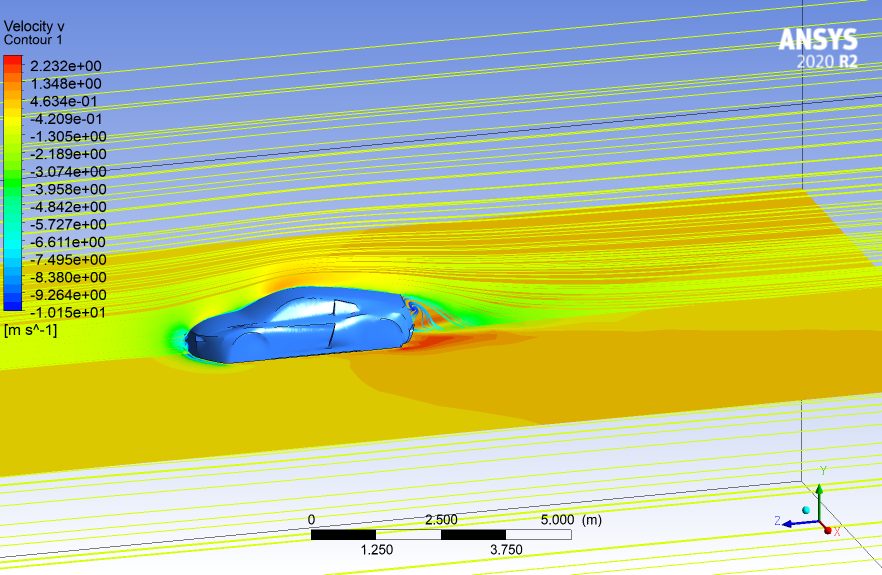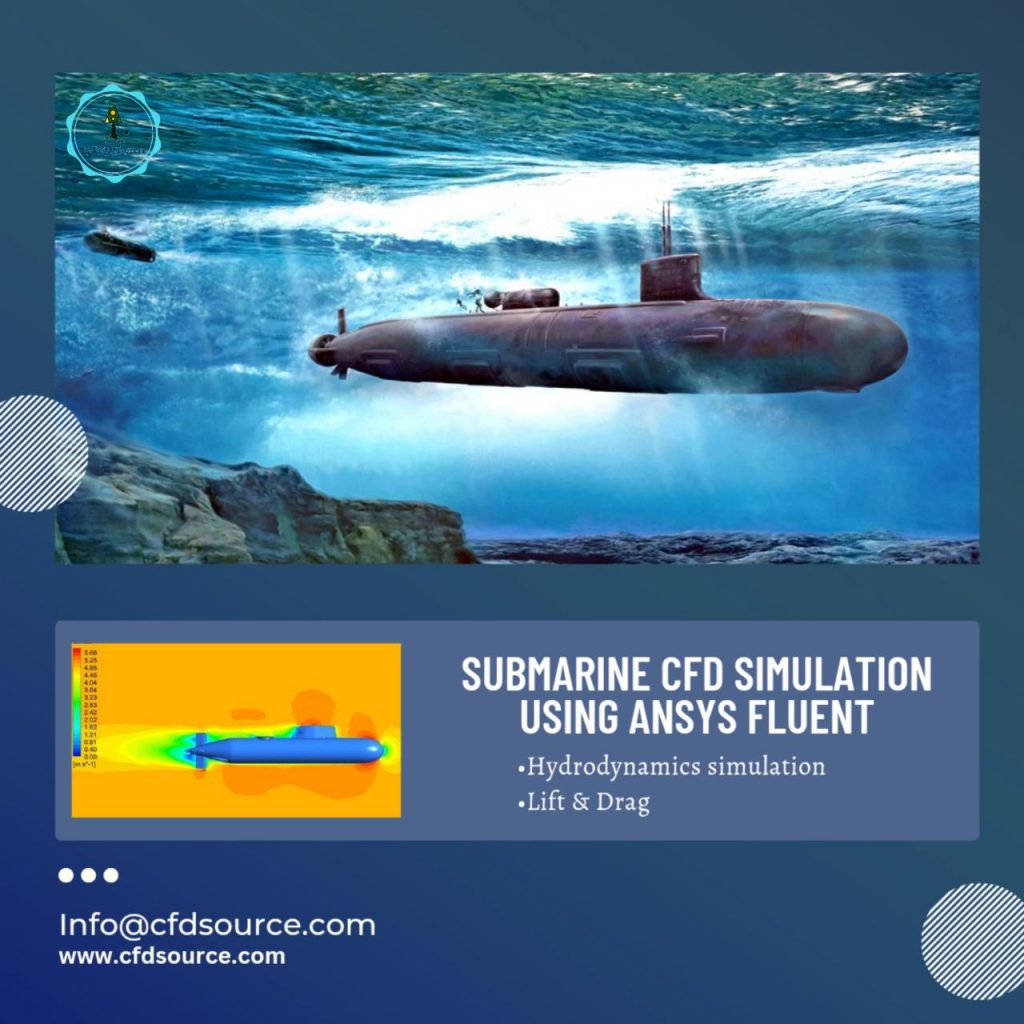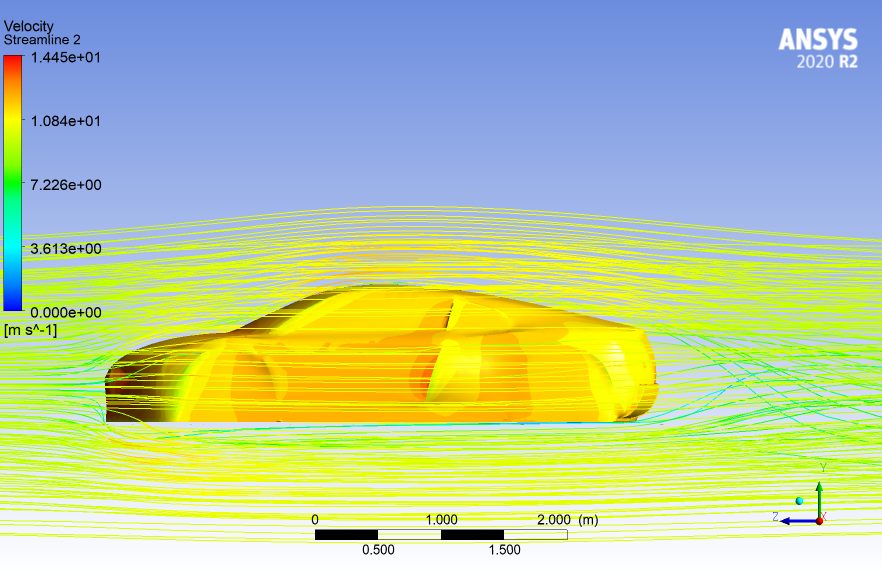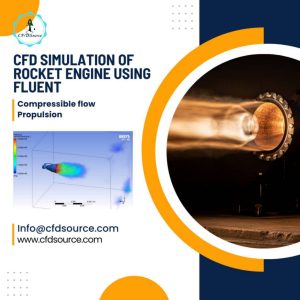CFD in Engineering: Computational Fluid Dynamics (CFD) is a powerful tool that has revolutionized the field of engineering. Whether it’s designing efficient aircraft, optimizing combustion engines, or solving complex environmental problems, CFD plays a crucial role. In this essay, we will delve deep into the world of CFD, exploring its applications, significance, challenges, and future prospects.

Introduction to CFD in Engineering
Computational Fluid Dynamics (CFD) is a game-changer in the world of engineering. It’s a technology that bridges the gap between imagination and reality, enabling engineers to create highly sophisticated simulations of fluid flow and heat transfer. By doing so, they can predict and analyze the behavior of fluids and gases in various environments, which has far-reaching implications across a wide spectrum of industries. CFD has become an indispensable tool for engineers looking to optimize designs, enhance efficiency, and ensure safety. Whether you’re designing a sleeker aircraft, more fuel-efficient cars, or addressing complex environmental challenges, CFD plays a pivotal role in the decision-making process.
What is CFD?
At its core, Computational Fluid Dynamics, or CFD, is a method of applying mathematical models and numerical analysis to solve problems related to fluid flow and heat transfer. This field allows engineers and scientists to simulate and study the behavior of fluids in situations that range from the simplest to the most complex. Instead of relying solely on physical experiments or prototypes, CFD offers a virtual laboratory where one can analyze and predict the behavior of fluid systems in great detail.
The fundamental premise is to divide the problem domain into a mesh of small elements, apply the laws of physics, and then use powerful computers to solve complex equations that describe fluid dynamics. The result is a comprehensive understanding of how fluids, be they liquids or gases, interact with their surroundings, making CFD a vital tool in engineering and scientific research.

Applications of CFD in Engineering
Aerospace Engineering
One of the most illustrious applications of CFD lies within the aerospace industry. Engineers in this field rely on CFD simulations to design and optimize aircraft with a level of precision that was previously unimaginable. Aerodynamics is a key factor in aircraft performance, and CFD plays a central role in assessing it. Engineers use CFD to predict lift and drag forces, study airflow around the aircraft, and fine-tune wing shapes and engine designs. These simulations are essential for ensuring that aircraft not only perform optimally but also meet stringent safety standards. With CFD, aerospace engineers can run countless virtual tests and make design adjustments accordingly, saving both time and resources.
Automotive Engineering
In the realm of automotive engineering, CFD is nothing short of revolutionary. It helps engineers optimize vehicle design in ways that greatly impact fuel efficiency, safety, and overall performance. CFD simulations are used to study airflow around cars, which, in turn, aids in enhancing aerodynamics. Reduced drag means improved fuel economy, which is critical in an era where environmental concerns and fuel costs are paramount. Additionally, CFD assists in refining engine cooling systems and exhaust designs, all of which contribute to making vehicles more eco-friendly and cost-effective.
Environmental Engineering
Environmental engineers, too, have harnessed the power of CFD in their quest to understand and mitigate the impact of pollution. By simulating the dispersion of pollutants in the air or water, CFD helps assess the environmental consequences of various emissions. This is particularly valuable in the design and assessment of factories, buildings, and transportation systems. It ensures that urban planning decisions are made with sustainability in mind. Furthermore, CFD is employed in indoor air quality modeling, enabling the creation of healthier, safer indoor environments for the well-being of occupants. In essence, CFD is a key tool in the arsenal of environmental engineers working to create cleaner, more sustainable communities.
The Importance of CFD in Modern Engineering
The significance of Computational Fluid Dynamics (CFD) in modern engineering cannot be overstated. In a world where technological advancement is a driving force across industries, CFD serves as a beacon of innovation that has revolutionized the design and development processes. Engineers and scientists leverage CFD to bridge the gap between conceptual design and real-world performance, offering a virtual environment where the intricacies of fluid flow and heat transfer can be meticulously examined. This transformational tool is instrumental in saving time, resources, and even lives.

One of the most compelling aspects of CFD is its ability to facilitate safer engineering solutions. In fields like aerospace, CFD simulations have made it possible to assess the aerodynamic performance of aircraft designs with unprecedented accuracy. It ensures that every aspect of an aircraft’s design is meticulously scrutinized, from wing shapes to engine placements, in the quest for optimal safety and efficiency.
In the automotive sector, the focus on designing vehicles that are both eco-friendly and fuel-efficient is greatly supported by CFD. Simulating airflow over car designs, CFD identifies areas where energy can be conserved, emissions reduced, and overall performance enhanced. It’s a pivotal tool in addressing environmental concerns, optimizing fuel economy, and ensuring that the vehicles of the future are safer and more sustainable.
Furthermore, CFD’s role in enhancing efficiency is a game-changer. Traditional engineering practices often involve multiple physical prototypes and time-consuming iterations, which can be costly and resource-intensive. CFD offers a more streamlined alternative by facilitating the creation of virtual prototypes. Engineers can simulate and test different design scenarios swiftly and rigorously. This accelerated design process reduces costs and resources, making it feasible for engineers to explore a broader range of design options. The savings in both time and money that CFD provides cannot be underestimated.
The eco-friendly dimension of CFD is another pivotal factor. As the world grapples with environmental concerns and a growing need for sustainable practices, CFD empowers engineers to create designs that are kinder to the planet. By optimizing designs to reduce drag, enhance combustion efficiency, or improve airflow in ventilation systems, CFD contributes to the creation of environmentally conscious solutions. In a world where sustainability is paramount, CFD serves as a vital tool for engineers committed to designing greener, more sustainable products and systems.
In essence, CFD represents a fundamental shift in the engineering paradigm, from a reliance on physical experimentation to a more data-driven and simulation-based approach. This transformation enables engineers to push the boundaries of what’s possible while ensuring that designs meet the highest standards of safety and environmental responsibility. The importance of CFD in modern engineering is not just about improving efficiency and reducing costs; it’s about shaping a future where engineering solutions are more sustainable, safer, and better aligned with the evolving needs of society.
CFD Software and Tools
The world of CFD is home to a myriad of software packages and tools, each designed to cater to different engineering needs. These tools offer various features and capabilities, making them suitable for a wide range of applications. ANSYS, for instance, is a prominent name in the CFD software realm. It’s known for its versatility and power, allowing engineers to simulate everything from fluid flow to structural mechanics. Its extensive range of solvers and pre-processing/post-processing tools makes it a top choice for many engineering applications. OpenFOAM, on the other hand, is an open-source CFD software that is highly adaptable and customizable. It appeals to those who require a more tailored approach to their simulations.
COMSOL is a multiphysics simulation software that extends beyond CFD, allowing engineers to tackle complex problems that involve multiple physical phenomena. This versatility is particularly beneficial when designing systems where fluid flow interacts with other physical processes. These software options, among many others, provide a toolbox for engineers and scientists to explore and understand fluid dynamics in their specific domains. Selecting the most suitable software depends on the application, computational resources, and expertise available. Whether you’re optimizing an aircraft’s aerodynamics or studying the flow of pollutants in the environment, there’s a CFD software package designed to meet your needs.
CFD in Aerospace Engineering
CFD has profoundly impacted the aerospace engineering sector, revolutionizing the way aircraft are designed and optimized. The aviation industry demands ever-increasing efficiency, safety, and environmental responsibility. Here, CFD simulations play a pivotal role in achieving these goals. By simulating the flow of air over various aircraft components, such as wings and engines, engineers can refine designs and assess their aerodynamic performance.
The ability to predict lift and drag forces is essential for designing aircraft that not only maximize performance but also meet stringent safety standards. Additionally, CFD allows engineers to ensure that aircraft maintain stability under a variety of flight conditions. The development of advanced software tools and high-performance computing resources has further empowered aerospace engineers, enabling them to run numerous virtual tests. This iterative process has significantly reduced the need for costly physical prototypes and extensive wind tunnel testing. In an industry where safety is paramount, CFD has become an indispensable tool for ensuring that aircraft designs are both safe and efficient.
CFD in Automotive Engineering
The automotive industry has experienced a paradigm shift thanks to Computational Fluid Dynamics (CFD). The pursuit of more fuel-efficient vehicles with reduced emissions and improved safety has never been more critical. CFD simulations are integral to this endeavor. By creating detailed models of vehicles and their surrounding airflow, engineers can optimize aerodynamics. Reducing drag is central to enhancing fuel economy, and CFD allows engineers to assess and refine vehicle shapes for minimal air resistance. This not only conserves energy but also decreases greenhouse gas emissions.
Furthermore, CFD assists in designing engine cooling systems that prevent overheating, ensuring the engine operates optimally. It also plays a role in exhaust system design, helping vehicles comply with emissions regulations. Overall, CFD is a game-changer for automotive engineers, enabling them to create vehicles that are both fuel-efficient and environmentally responsible. The rapid advancement of CFD tools and high-performance computing has significantly accelerated the design process, allowing engineers to evaluate numerous design alternatives quickly.
CFD in Environmental Engineering
Environmental engineering has been empowered by CFD to address and mitigate pollution, offering sustainable and environmentally friendly solutions. One of the most significant applications in this field is the dispersion modeling of air and water pollutants. CFD allows engineers to simulate the spread of emissions from factories, vehicles, and other sources, making it an invaluable tool for urban planners and policymakers. By assessing the environmental impact of emissions, informed decisions can be made to minimize pollution and improve air quality. Additionally, CFD is used to design ventilation and air conditioning systems that provide healthy indoor environments.
Proper ventilation is crucial for public spaces, office buildings, and healthcare facilities, especially in light of recent concerns about indoor air quality. Environmental engineers utilize CFD to ensure that indoor spaces are well-ventilated, free from contaminants, and conducive to the well-being of occupants. Sustainable urban planning, with an emphasis on clean air and water, is increasingly important, and CFD helps to achieve these goals. As the world shifts toward more sustainable practices, CFD is a crucial tool in the arsenal of environmental engineers working to create cleaner, healthier communities.
Future Trends in CFD
The future of Computational Fluid Dynamics is an exciting frontier with several key trends shaping its trajectory. Artificial intelligence (AI) and machine learning are poised to have a profound impact. These technologies will enhance the accuracy and efficiency of CFD simulations. By leveraging AI, engineers will be able to develop intelligent CFD models that learn from past simulations, adapt to new scenarios, and automate various aspects of the simulation process. This promises to make CFD more accessible to a broader range of professionals and industries.
Furthermore, multi-physics simulations, which consider multiple physical phenomena simultaneously, will become more common. These simulations will enable engineers to address complex problems that involve fluid flow, heat transfer, structural mechanics, and other interrelated phenomena. The integration of these physical processes in a single simulation will lead to more holistic and accurate results, advancing engineering across various sectors. Another notable trend is the increasing focus on energy efficiency and sustainability. As the world grapples with environmental challenges, CFD will play a pivotal role in designing energy-efficient systems, optimizing renewable energy sources, and reducing carbon emissions.
Whether it’s creating greener transportation systems, more efficient industrial processes, or sustainable urban environments, CFD will continue to be a driving force for innovation and positive change. These trends highlight that the future of CFD is marked by greater accessibility, increased accuracy, and a heightened commitment to addressing pressing global challenges. As computational power and software capabilities advance, CFD will remain at the forefront of engineering and scientific research, driving innovation and sustainability.
Conclusion
In conclusion, Computational Fluid Dynamics (CFD) stands as a technological marvel that has reshaped the landscape of engineering and scientific research. Its significance is felt across multiple domains, from aerospace and automotive engineering to environmental sustainability. CFD bridges the gap between imagination and reality, allowing engineers to create highly detailed simulations of fluid flow and heat transfer.
This process empowers them to predict and analyze fluid behavior in a virtual environment, offering a deep understanding of complex systems. The advantages of CFD are profound, including cost savings, enhanced efficiency, and a sustainable approach to design. However, it is not without its challenges, particularly in turbulence modeling, numerical accuracy, and the need for significant computational resources.
Nevertheless, these challenges are dwarfed by the remarkable progress and contributions that CFD offers to our ever-evolving world. As technology advances, so too does the role of CFD in our lives. It has become an indispensable tool for creating safer, more efficient, and environmentally responsible designs. From the skies above to the roads below and the environment that surrounds us, CFD plays a vital role in shaping a more sustainable and innovative future.




